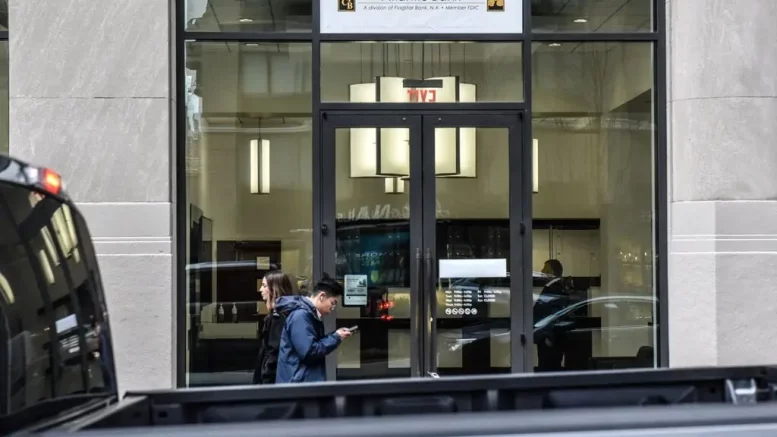As the one-year anniversary of a crisis that led to the collapse of several midsize banks approaches, the spotlight shifts to another financial institution, New York Community Bancorp, raising concerns within the industry. With operations spanning approximately 400 branches nationwide under brands like Flagstar Bank and Ohio Savings Bank, New York Community Bancorp expanded significantly over the past year, reaching over $100 billion in assets after acquiring Signature Bank last spring through a federal regulator-organized auction.
However, the bank’s fortunes took a sharp downturn following the release of a concerning earnings report, which disclosed unexpected losses on real estate loans linked to both office and apartment buildings. This revelation led to a drastic drop in the bank’s stock value, plummeting by more than half over the course of a week. The ripple effect was felt across other lenders with portfolios heavily invested in commercial real estate, echoing the interconnected nature of the banking sector, reminiscent of the events that precipitated last spring’s crisis.
The heart of the latest banking worries lies in New York Community Bancorp’s acknowledgment of a significant decline in the value of its real estate loans, prompting actions such as slashing dividends and setting aside substantial funds to cushion against potential future losses. Specific loans, notably related to an office complex and a co-op residential building, accounted for substantial losses, further exacerbating concerns among investors and analysts. Despite requests for comment, bank representatives remained elusive, intensifying apprehensions regarding the institution’s future profitability.
The specter of potential losses extends beyond New York Community Bancorp to a broad spectrum of smaller lenders, including community banks and private lenders, with exposure to commercial real estate loans. These loans, many of which were extended before the onset of the post-pandemic shift to hybrid work, face heightened risks amid declining property values and rising interest rates, making refinancing more costly.
While larger banks like JPMorgan Chase and Citigroup have also braced themselves by allocating funds for potential real estate losses, they are generally perceived as better equipped to weather such downturns due to their diversified lending portfolios and broader depositor base. Nonetheless, regulatory authorities remain vigilant, with Federal Reserve Chair Jerome H. Powell emphasizing proactive measures to address banking challenges and Treasury Secretary Janet Yellen acknowledging ongoing monitoring efforts.
Amidst the heightened scrutiny, concerns about a potential bank run have surfaced, recalling the panic-driven withdrawals witnessed during last spring’s crisis. However, there are currently no indications of imminent instability at New York Community Bancorp, with deposit levels remaining relatively stable. Moreover, existing safeguards such as government insurance coverage provide reassurance to customers, ensuring protection of their deposits even in the event of a bank failure.

